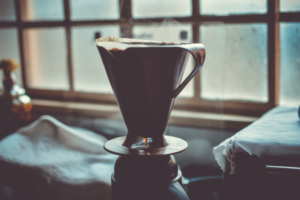No world of coffee enthusiasts, few experiences can rival the rich and intense indulgence of a perfectly crafted espresso. From its origins in Italian cafes to becoming one of the most popular ways to enjoy coffee worldwide, espresso captivates the taste buds of caffeine and gastronomy lovers alike.
In the following article, we will delve into the depths of coffee culture, immersing ourselves in the art of espresso and unraveling the techniques and tricks that elevate this beverage to a realm of unparalleled flavor and quality.
Whether you are an enthusiast looking to refine your home-brewing skills or someone seeking to better understand the process behind the perfect cup, join us on this journey of discovery that will lead us to master the craft of creating an truly incredible espresso.
Choosing the Right Beans
The foundation of a great espresso starts with high-quality beans. Opt for freshly roasted beans from reputable sources, preferably with a medium to dark roast profile, as they tend to yield a rich and well-rounded flavor.
Grinding for Perfection
Invest in a burr grinder to ensure consistent particle size. For espresso, a fine grind is essential to maximize surface area and extraction, resulting in a robust and aromatic cup.
Maintaining the Optimal Water Temperature
The ideal water temperature for brewing espresso ranges between 195 to 205 degrees Fahrenheit (90 to 96 degrees Celsius). Use a reliable espresso machine with precise temperature control to maintain consistency.
Mastering the Espresso Machine
Familiarize yourself with your espresso machine, understanding its components and functionalities. Consistency in tamping pressure, shot duration, and water pressure is crucial for excellent extraction.
Proper Tamping Technique
Achieving uniform and level tamping is essential for consistent extraction. Apply firm, even pressure to the coffee grounds in the portafilter using a tamper, ensuring a flat and compact puck.
Measuring the Perfect Dose
Consistency in dosage is vital for obtaining a balanced espresso. Use a scale to measure the correct amount of coffee grounds, typically around 18 to 20 grams, depending on your preference.
Pre-infusion for Enhanced Extraction
Consider utilizing the pre-infusion feature on your espresso machine, which saturates the coffee grounds before extraction. This process allows for more even extraction and better flavor development.
Timing the Shot
The duration of the espresso shot plays a crucial role in flavor extraction. Aim for a total shot time of 25 to 30 seconds, with the first droplets appearing around 5 to 7 seconds after initiating the extraction.
Achieving the Perfect Crema
Crema, the golden layer on top of the espresso, is a hallmark of a well-made shot. It indicates proper extraction and contributes to the overall flavor and mouthfeel. Freshly roasted beans and an appropriate grind size are key to achieving a thick and creamy crema.
Milk Texturing for Espresso-Based Drinks
If you enjoy espresso-based drinks like lattes and cappuccinos, mastering milk texturing is essential. Achieve a velvety and creamy texture by using cold milk and positioning the steam wand correctly.
Experimenting with Brew Ratios
Adjusting the brew ratio, which is the ratio of coffee grounds to the final volume of espresso, allows you to fine-tune the strength and flavor of your shot. Start with a 1:2 ratio (e.g., 18g of coffee to yield 36g of espresso) and experiment to find your preferred balance.
Understanding and Adapting to Different Beans
Different coffee beans have unique flavor profiles, requiring adjustments in grind size, extraction time, and brew ratio. Take the time to understand the characteristics of each bean and tailor your brewing technique accordingly.
Regular Cleaning and Maintenance
To ensure the longevity and optimal performance of your espresso machine, regular cleaning and maintenance are essential. Follow the manufacturer’s instructions for descaling, backflushing, and cleaning the steam wand to prevent the buildup of residue and maintain the machine’s functionality.
Water Quality Matters
The quality of water used for brewing espresso significantly impacts the flavor. Use filtered water or consider investing in a water filtration system to minimize impurities and unwanted flavors in your cup.
Temperature Surfing
For machines without precise temperature control, temperature surfing is a technique used to achieve the desired water temperature. This involves flushing the brew head and waiting for the temperature to stabilize before initiating the shot.
Patience and Practice
Becoming a master of espresso brewing requires patience and practice. Experiment with different variables, take note of the results, and make adjustments accordingly. With time and dedication, you’ll refine your technique and consistently produce exceptional espresso.
Troubleshooting Common Issues
Even with the best techniques, occasional challenges may arise. Familiarize yourself with common issues such as channeling (uneven extraction), sour or bitter taste, or weak crema. Understanding these problems and their potential causes will enable you to troubleshoot and make necessary adjustments.
Embracing Single-Origin Espressos
While espresso blends are popular, exploring single-origin espressos can be a delightful adventure. Each origin offers distinct flavors and aromas, allowing you to appreciate the nuances of different coffee-growing regions around the world.
Experimenting with Espresso Recipes
Beyond the classic espresso shot, there is a myriad of espresso-based recipes to explore. Try your hand at macchiatos, mochas, affogatos, or even espresso martinis. Let your creativity flow and discover new and exciting ways to enjoy espresso.
Storing Coffee Beans Properly
To maintain the freshness and flavor of your coffee beans, proper storage is crucial. Keep them in an airtight container away from light, moisture, and heat. Avoid storing them in the refrigerator or freezer, as they can absorb odors and lose flavor.
Understanding the Impact of Roast Levels
Roast levels play a significant role in espresso flavor. Lighter roasts highlight the bean’s natural acidity and floral notes, while darker roasts bring out rich, chocolaty flavors. Experiment with different roast levels to find your preferred taste profile.
Appreciating the Role of Water Pressure
Water pressure during extraction affects the overall flavor of espresso. Adjusting the pressure can fine-tune the extraction and achieve desired results. Familiarize yourself with your machine’s pressure settings and experiment with different pressures.
Investing in Quality Equipment
While technique plays a vital role, investing in high-quality equipment can significantly enhance your espresso experience. Consider purchasing a reliable espresso machine, grinder, and accessories that suit your needs and budget.
Seeking Knowledge and Learning
The world of coffee is vast and ever-evolving. Stay curious and continue learning about different brewing methods, coffee origins, and techniques. Attend workshops, read books, and engage with the coffee community to expand your knowledge and refine your skills.
Exploring Alternative Brewing Methods
While espresso is beloved, don’t limit yourself to just one method. Experiment with alternative brewing methods such as pour-over, French press, or AeroPress. Each method offers unique characteristics that can broaden your coffee palate.
Engaging in Cupping Sessions
Cupping sessions, where you taste and evaluate different coffee samples, can develop your sensory skills and deepen your understanding of flavor profiles. Participate in cupping sessions organized by coffee professionals or create your own at home.
Sharing the Experience
Coffee is meant to be shared and enjoyed with others. Invite friends, family, or fellow coffee enthusiasts to join you in tasting and exploring the world of espresso. Share your knowledge, techniques, and favorite beans to create memorable coffee experiences together.
Supporting Sustainable and Ethical Practices
When purchasing coffee beans, consider supporting brands and producers that prioritize sustainable and ethical practices. Look for certifications like Fair Trade, Rainforest Alliance, or organic labels to ensure your coffee is sourced responsibly.
Embracing the Journey
Mastering the art of espresso is an ongoing journey that evolves over time. Embrace the process, embrace the challenges, and enjoy the small victories along the way. Each cup of espresso you brew is an opportunity to learn, improve, and indulge in the delights of this intricate craft.
Conclusion
The art of espresso brewing is a multifaceted endeavor that requires knowledge, skill, and a passion for quality coffee. By exploring the techniques, tricks, and tips outlined in this article, you can embark on a journey to master the art of espresso. From choosing the right beans and equipment to understanding extraction, milk texturing, and troubleshooting, each step contributes to creating an exceptional cup of coffee. So, immerse yourself in the world of espresso, experiment with flavors, and enjoy the process of refining your skills. With dedication and a discerning palate, you’ll be well on your way to becoming a true espresso aficionado. Cheers to mastering the art of espresso!



